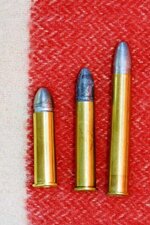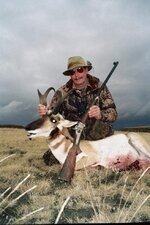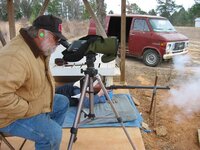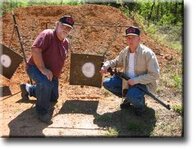- Messages
- 48
- Reactions
- 9
Mods, I apologize if this should be in the general firearms discussion, but I was leaning towards the application of the round versus the availability/ballistics/history of the round itself.
I have read websites, and seen western movies that portray the fabled Sharps in .45-70 as this awesome long range man/buffalo stopper. I am not disputing this, but I am wondering for those that have experience with this caliber; was this because AT the time, it was the best? Or because even TODAY this round is a solid long range caliber capable of making extremely accurate kill shots. Be it beast or man. I am currently in the market for a long range platform. I love the older weapons, I still use revolvers and Winchester lever guns in an era of auto's and AR's. I have come to accept the fact that most bigger caliber (.30 caliber up) long range purpose rifles will come with a price. If I can get the same performance from a replica Montana made Sharps rifle as I can with the latest tacticool bolt gun, I would much rather get a Sharps.
One alibi, when I say 'the same performace' I understand that a Sharps rifle is probably not capable of the same accuracy as say a Rem 700 with bipod, Leupold and match .308 ammo. But, will it make satisfactory shots out to the same long ranges. I simply do not know enough about the gun, or about its abilities at taking game.
I have read websites, and seen western movies that portray the fabled Sharps in .45-70 as this awesome long range man/buffalo stopper. I am not disputing this, but I am wondering for those that have experience with this caliber; was this because AT the time, it was the best? Or because even TODAY this round is a solid long range caliber capable of making extremely accurate kill shots. Be it beast or man. I am currently in the market for a long range platform. I love the older weapons, I still use revolvers and Winchester lever guns in an era of auto's and AR's. I have come to accept the fact that most bigger caliber (.30 caliber up) long range purpose rifles will come with a price. If I can get the same performance from a replica Montana made Sharps rifle as I can with the latest tacticool bolt gun, I would much rather get a Sharps.
One alibi, when I say 'the same performace' I understand that a Sharps rifle is probably not capable of the same accuracy as say a Rem 700 with bipod, Leupold and match .308 ammo. But, will it make satisfactory shots out to the same long ranges. I simply do not know enough about the gun, or about its abilities at taking game.
















